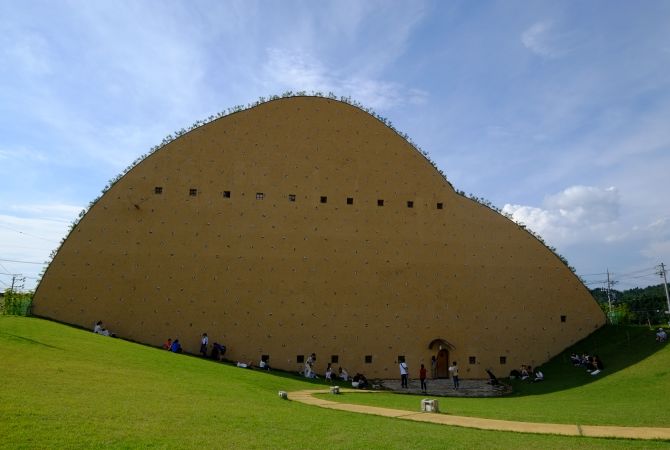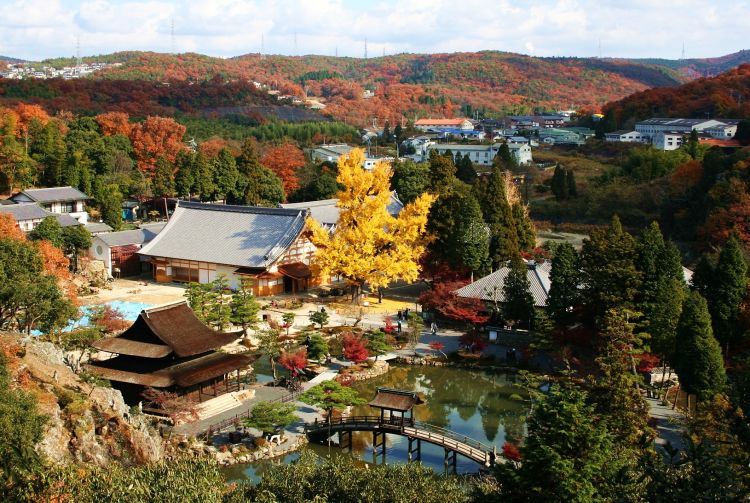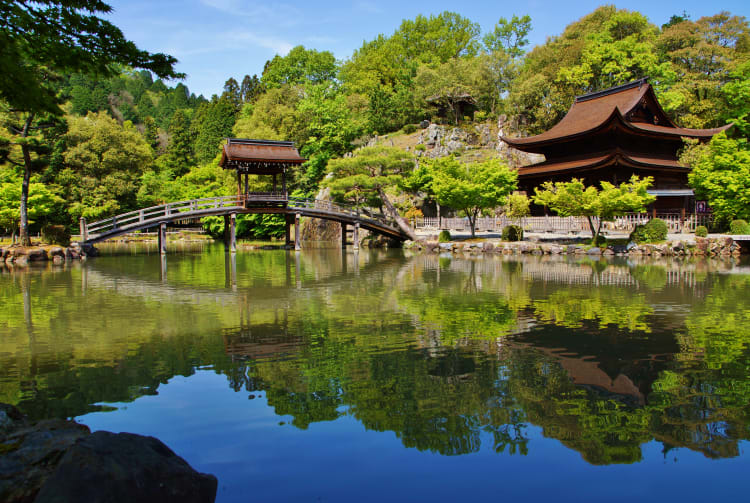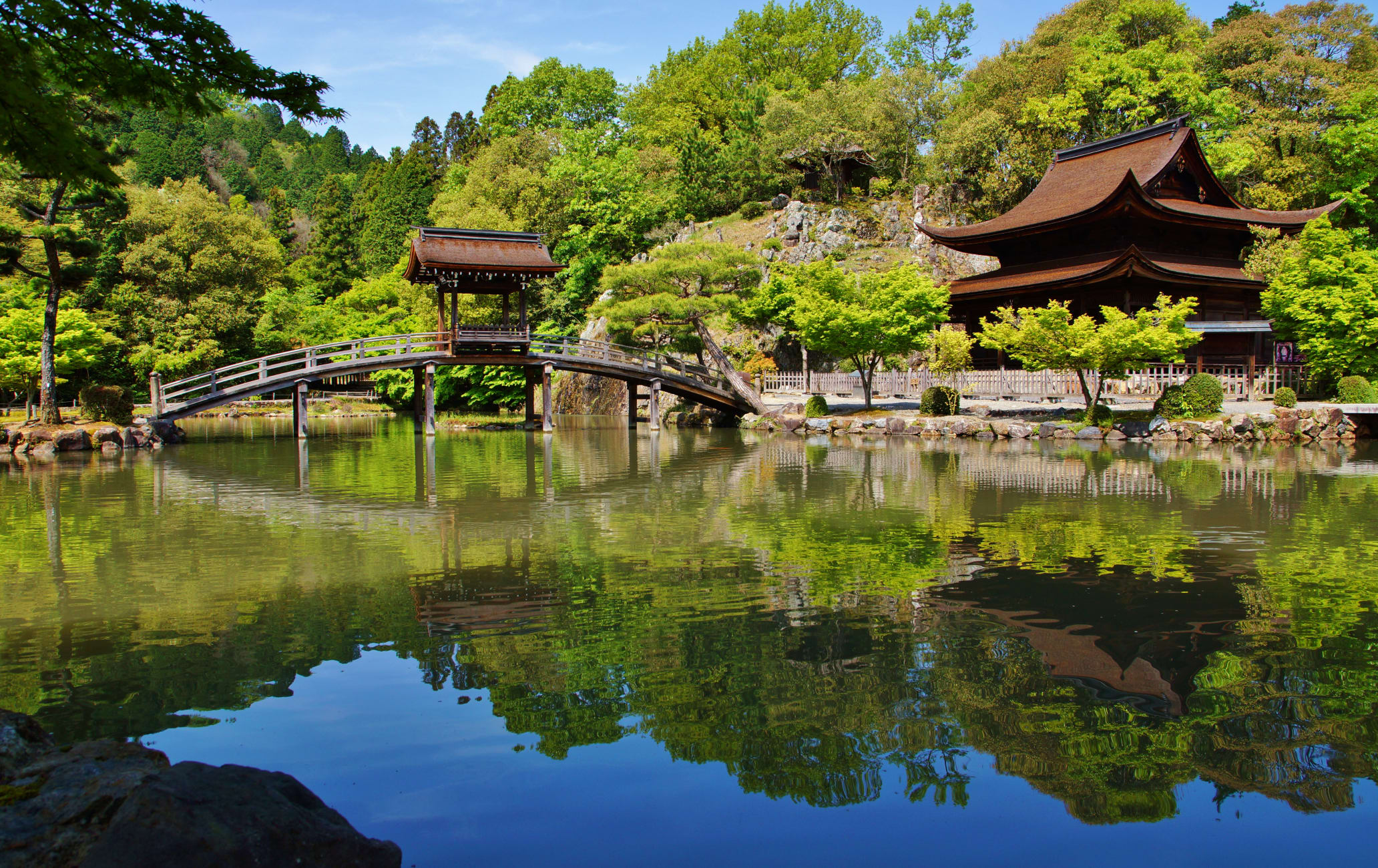La capital de la cerámica de Gifu desde hace un milenio, con un templo zen y un monasterio vinícola cercano
Situada en la frontera sur de las prefecturas de Gifu y Aichi , la ciudad de Tajimi es conocida por ser el centro de producción de cerámica mino-yaki durante los últimos 10 siglos. Todo el lugar está dedicado a dar forma y cocer los característicos platos, tazones, recipientes y utensilios para servir. El festival de la cerámica de Tajimi en primavera y en otoño atraen a decenas de miles de visitantes.
Además de museos de cerámica, Tajimi tiene un bonito templo, Kokeizan Eihoji, y un monasterio católico que elabora su propio vino. Ambos son buenos lugares para la contemplación espiritual.
No te pierdas
- Comprar cerámica en la calle Honmachi Oribe
- Crear tu propia pieza de cerámica en Ceramic Park Mino
- Reponer fuerzas en el jardín zen de Kokeizan Eihoji
Cómo llegar
Se accede fácilmente a Tajimi desde la estación de Nagoya .
Tajimi está en la línea principal JR Chuo, a unos 30 o 40 minutos de Nagoya. En la ciudad de Gifu, monta en la línea Takayama hasta Mino-Ota y haz transbordo a la línea Taita en dirección Tajimi (aproximadamente 1 hora).
Encuentra auténticos tesoros en la calle de la cerámica
Tras un paseo de 10 minutos cruzando el río por el lado sur de la estación de Tajimi llegarás a la calle Honmachi Oribe, un barrio comercial dedicado enteramente a la cerámica. Desde recuerdos a precios razonables hasta obras de arte increíblemente caras, aquí hay piezas para todos los gustos y bolsillos.
Tajimi ha sido sinónimo de cerámica, en concreto la mino-yaki, durante más de un milenio. Una de las señas de identidad es el característico diseño vidriado de un intenso color verde cobrizo. En la calle hay un pequeño centro de información, tiendas de antigüedades y algunos lugares donde degustar platos deliciosos.
Un parque temático de cerámica donde puedes ponerte manos a la obra
Si quieres seguir disfrutando de la cerámica, Ceramic Park Mino está a solo 10 minutos en autobús de la estación de Tajimi. Aquí puedes comprar y probar a hacer tu propia pieza de cerámica, que puedes pedir que te envíen después de cocerse. En el parque se encuentra el Museo de Arte Cerámico Moderno y el Museo Cerámico de la Prefectura de Gifu.
La historia en un contexto natural
El Museo del Mosaico de Tajimi te permite hacer un recorrido por la producción de azulejos a lo largo de la historia a través de sus 200-300 exposiciones.
Si bien el museo puede resultar interesante, el edificio que lo alberga es motivo suficiente para acercarte a él. Diseñado por Terunobu Fujimori, funde magistralmente arquitectura con naturaleza. El museo está a 20 minutos en autobús desde la estación de Tajimi.


Renueva tu espíritu
Una vez hayas satisfecho tus ansias de cerámica, dirígete al templo Kokeizan Eihoji para disfrutar de la quietud y la contemplación. Fundado en 1313 a orillas del río Toki, se llega a él por un sendero empinado y serpenteante que atraviesa un bosque milenario.

En el templo hay un enorme estanque lleno de carpas gigantes y pequeñas estatuas budistas de Jizo escondidas entre los árboles que lo bordean. Hay una cabaña de meditación en lo alto de una roca desde donde cae una cascada hasta el estanque. Los monjes todavía reciben formación en Eihoji, lo que aumenta aún más la atmósfera espiritual.

Vino y rezos en un monasterio
En la parte inferior de la pendiente que conduce de Eihoji a la ciudad se encuentra el monasterio Tajimi, un amplio complejo fundado en 1930 por un misionero alemán. En este lugar los monjes católicos cosechan uvas con las que elaboran vino, el souvenir más famoso de la región. Se celebra misa en inglés dos veces al mes y hay un festival del vino en noviembre.















































